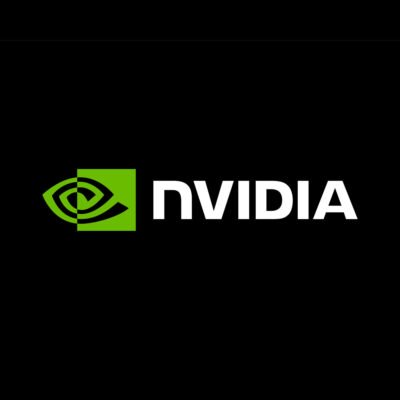Compare Models
-
NVIDIA
LaunchPad
FREENVIDIA LaunchPad provides free access to enterprise NVIDIA hardware and software through an internet browser. NVIDIA customers can experience the power of AI with end-to-end solutions through guided hands-on labs or use NVIDIA-Certified Systems as a sandbox, but you need to fill out an Application Form and wait for approval. Sample labs include training and deploying a support chatbot, deploying an end-to-end AI workload, configuring and deploying a language model on the hardware accelerator, and deploying a fraud detection model.*FREE via Application Form -
Microsoft, NVIDIA
MT-NLG
OTHERMT-NLG (Megatron-Turing Natural Language Generation) uses the architecture of the transformer-based Megatron to generate coherent and contextually relevant text for a range of tasks, including completion prediction, reading comprehension, commonsense reasoning, natural language inferences, and word sense disambiguation. MT-NLG is the successor to Microsoft Turing NLG 17B and NVIDIA Megatron-LM 8.3B. The MT-NLG model is three times larger than GPT-3 (530B vs 175B). Following the original Megatron work, NVIDIA and Microsoft trained the model on over 4,000 GPUs. NVIDIA has announced an Early Access program for its managed API service to the MT-NLG model for organizations and researchers. -
NVIDIA
NeMo
FREENVIDIA NeMo, part of the NVIDIA AI platform, is an end-to-end, cloud-native enterprise framework to help build, customize, and deploy generative AI models. NeMo makes generative AI model development easy, cost-effective and fast for enterprises. NeMo has separate collections for Automatic Speech Recognition (ASR), Natural Language Processing (NLP), and Text-to-Speech (TTS) models. Each collection consists of prebuilt modules that include everything needed to train on your data. NeMo framework supports both language and image generative AI models. Currently, the workflow for language is in open beta, and the workflow for images is in early access. You must be a member of the NVIDIA Developer Program and logged in with your organization’s email address to access it. It is licensed under the Apache License 2.0, which is a permissive open source license that allows for commercial use. -
Google
PaLM 2 chat-bison-001
$0.0021535PaLM 2 has just launched (May 2023) and is Google’s next-generation Large Language Model, built on Google’s Pathways AI architecture. PaLM 2 was trained on a massive dataset of text and code, and it can handle many different tasks and learn new ones quickly. It is seen as a direct competitor to OpenAI’s GPT-4 model. It excels at advanced reasoning tasks, including code and math, classification and question answering, translation and multilingual proficiency (100 languages), and natural language generation better than our previous state-of-the-art LLMs, including its predecessor PaLM.PaLM 2 is the underlying model driving the PaLM API that can be accessed through Google’s Generative AI Studio. PaLM 2 has four submodels with different sizes. Bison is the best value in terms of capability and chat-bison-001 has been fine-tuned for multi-turn conversation use cases. If you want to see PaLM 2 capabilities, the simplest way to use it is through Google Bard (PaLM 2 is the technology that powers Google Bard).Watch Paige Bailey introducing PaLM 2: view here
-
ChatGLM
PaLM 2 text-bison-001
$0.004PaLM 2 has just launched (May 2023) and is Google’s next-generation Large Language Model, built on Google’s Pathways AI architecture. PaLM 2 was trained on a massive dataset of text and code, and it can handle many different tasks and learn new ones quickly. It is seen as a direct competitor to OpenAI’s GPT-4 model. It excels at advanced reasoning tasks, including code and math, classification, question answering, translation and multilingual proficiency (100 languages), and natural language generation better than our previous state-of-the-art LLMs, including its predecessor PaLM.PaLM 2 is the underlying model driving the PaLM API that can be accessed through Google’s Generative AI Studio. PaLM 2 has four submodels with different sizes. Bison is the best value in terms of capability and cost, and text-bison-001 can be fine-tuned to follow natural language instructions and is suitable for various language tasks such as classification, sentiment analysis, entity extraction, extractive question answering, summarization, re-writing text in a different style, and concept ideation.If you want to see PaLM 2 capabilities, the simplest way to use it is through Google Bard (PaLM 2 is the technology that powers Google Bard).
Watch Paige Bailey introducing PaLM 2: view here
-
Google
PaLM 2 textembedding-gecko-001
$0.0004PaLM 2 has just launched (May 2023) and is Google’s next-generation Large Language Model, built on Google’s Pathways AI architecture. PaLM 2 was trained on a massive dataset of text and code, and it can handle many different tasks and learn new ones quickly. It is seen as a direct competitor to OpenAI’s GPT-4 model. It excels at advanced reasoning tasks, including code and math, classification and question answering, translation and multilingual proficiency (100 languages), and natural language generation better than our previous state-of-the-art LLMs, including its predecessor PaLM.PaLM 2 is the underlying model driving the PaLM API that can be accessed through Google’s Generative AI Studio. PaLM 2 has four submodels with different sizes: Unicorn (the largest), Bison, Otter, and Gecko (the smallest) and the different sizes of the submodels allow PaLM 2 to be more efficient and to perform different tasks. Gecko is the smallest and cheapest model for simple tasks and textembedding-gecko-001 returns model embeddings for text inputs.If you want to see PaLM 2 capabilities, the simplest way to use it is through Google Bard (PaLM 2 is the technology that powers Google Bard).Watch Paige Bailey introducing PaLM 2: view here
-
StableLM
StableLM-Base-Alpha -7B
FREEStability AI released a new open-source language model, StableLM. The Alpha version of the model is available in 3 billion and 7 billion parameters. StableLM is trained on a new experimental dataset built on The Pile, but three times larger with 1.5 trillion tokens of content. The richness of this dataset gives StableLM surprisingly high performance in conversational and coding tasks, despite its small size. The models are now available on GitHub and on Hugging Face, and developers can freely inspect, use, and adapt our StableLM base models for commercial or research purposes subject to the terms of the CC BY-SA-4.0 license.





